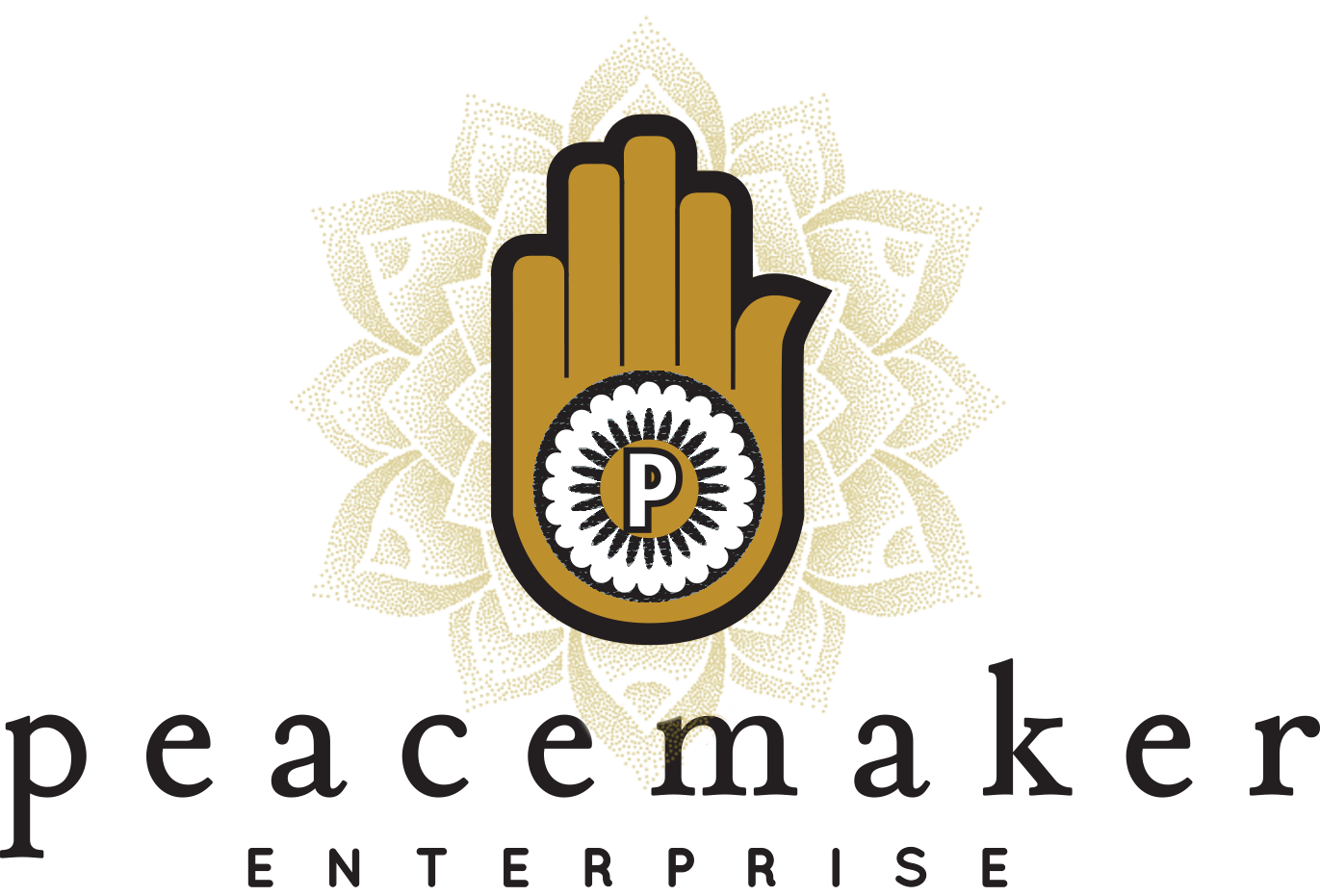Meditation

Stress, mindfulness, and meditation
The more stress you endure, the higher your risk of having a heart attack and dying suddenly from a heart event.
Stress can cause angina/chest pain due to an increase in heart rate and blood pressure, which increases demand on the heart.
Stress can damage the lining of artery walls (endothelium), increase cholesterol deposits to the artery wall, promote blood clotting, and release growth factors, all of which can lead to clogging of the arteries (atherosclerosis).
Stress can increase blood sugar levels if you have diabetes, which increases your risk of heart disease and other preventable complications relating to diabetes, including eye, kidney or nerve damage.
Stress can temporarily cause a serious, although usually temporary, dysfunction of your heart that mimics a heart attack. This condition is known as Takotsubo Syndrome, Broken Heart Syndrome or stress-induced cardiomyopathy. We have seen relatives of victims killed by police confrontation die or become ill after losing a loved one to death or prison.
It can be triggered by racism, homophobia, gang violence, poverty, police brutality, red lining.
It can be triggered by a new medical diagnosis such as heart disease, another person killed in your community, sexual harassment in the workplace or an acute medical illness such as bypass surgery, or a sudden intense emotional or physical stress (for example, the death of a relative from the Coronavirus, a catastrophic devastating financial losses due to unemployment. A mindful meditation practice might be the best medicine to reduce your stress.
- Radical self-care: boost immune system to fight virus, reduce stress, focus, restoration of the nervous system
- Emotional growth: healing trauma, depression, recovery and addictions, grief, anxiety/panic attacks, creativity, self-regulation, feeling less scattered
- Spirituality: deeper knowledge of self, seeking a relationship with a higher presence, more compassion toward all life forms
- Society: micro-aggressions: essential worker status, unemployment, violence, war, systemic racism, gender bias, poverty, incarceration, and other oppressions
The words meditation and mindfulness can be confusing, but they can easily work hand and hand. They gently do overlap but there is a difference. Mindful meditation with intention can be used as a powerful tool to assist in the dismantling of a colonized mindset within a society that presently reflects historical trauma and systemic oppressions such as race and caste oppression seen throughout our world.
Becoming more mindful can support us to rise above and become bigger than our challenges as we become more able to detach and more clear about how we want to show up on this planet and what we need to do to thrive on this planet without constant stress and distractions. I believe that we are experiencing a Renaissance alongside a Pandemic Global Virus throughout this planet. We all would benefit from a strong mindful meditative lifestyle to help us stay grounded and as stress free as we can. This will not be easy as a new world slowly restructures our way of living.
 Being mindful is a way of living with intention and purpose. It is a lifestyle and a way that we can create self-care and a compassionate attitude. We need the medicine of personal and collective compassion. We need radical compassion. When I am mindful there is an awareness of how I interact with the external world of people, places and situations around me as well as my internal world which includes my mind, my body, my spirit and my emotional landscape. Mindfulness can be the seen and the unseen.
Being mindful is a way of living with intention and purpose. It is a lifestyle and a way that we can create self-care and a compassionate attitude. We need the medicine of personal and collective compassion. We need radical compassion. When I am mindful there is an awareness of how I interact with the external world of people, places and situations around me as well as my internal world which includes my mind, my body, my spirit and my emotional landscape. Mindfulness can be the seen and the unseen.
Mindfulness is a mental attitude that can be a doorway to a higher consciousness and a purpose filled life. Living mindfully helps us to learn how to cultivate compassionate caring as a central way of living on this planet by respecting all life forms including protection of our environments. It helps us to become observers of ourselves by raising our awareness, noticing, and paying a deeper attention to our thoughts, feelings, behaviors, and everything else that we are interconnected with as humans. Being mindful can help us to pull our mindsets out of a matrix of hypnotic colonized fear-based belief systems that do not serve the greater Good of any life form. I believe that we are being called to evolve by establishing a spiritual relationship with a Higher Presence from the inside out.
I call this a process of intentional awareness. Mindfulness helps us to correct our reactions and actions and to know when to make amends to self and others. I describe mindfulness and meditation as my inner technology. When we practice mindfulness, we assist ourselves to stay more grounded and saner with the ability to notice when we might be acting out of destructive distress patterns, frozen needs and harmful behaviors to self and others.
Mindfulness can help you not lose your mind in case you lose your job or remain employed as an essential worker in a high stress environment. Intentional mindfulness can help a person see more closely just how their internalized racism controls all that they do. The more clearly, they can see the more they can release and discharge patterns of distress through actions of therapeutic recovery the more they can become free.
Mindfulness helps me to maintain accountability and integrity with my world. Either way I get to check myself and regulate how I want to respond to what is happening around me to the best of my ability. This is not always easy but each time I self-regulate , step back , keep my mouth shut or stay out of some else’s business I get better at being mindful, more aware of how I want to present myself and more respectful of self and others.
The murder of George Floyd.
Allowing meditation to become a core part of my daily life as well as living mindfully with intention has not always been easy. There are days that I do not want to be mindful of anything because I have a longer practice in the art of being numb and disassociated which is how I have lived most of my life.
I was born numb with an overwhelmed nervous because the first nine months of living inside of my dear mother had to be an overwhelming experience for her and for me. I was born to a mother that was African American, disabled from a massive stroke that left her in a day-to-day painful life of physical pain, suicidal thoughts, depression, and despair. I absorbed all of what she was.
The more I consistently meditate the easier it is for me to have a deeper meditative experience. I am more mindful and can better self-regulate how I absorb and buffer those every day micro aggressions such as systemic racism, my own internalized oppressions, police brutality, family stuff, loss of Black life that surrounds me.
The day I watched the killing of George Floyd on national TV was beyond emotionally challenging. I was transfixed in front of the TV waiting for it to not be real. I felt covered with tons of numbness, hurt, rage, and helplessness. I did not want to meditate after they killed George. It took days for me to come back to me. I felt lost in the horror and trauma of that event and meditation was the last thing I wanted to do. I cried everywhere. I cried in the store. I cried in the shower. I cried in the car. I cried while I was eating.
I woke up crying. I went to sleep crying. I felt emotionally homeless while George Floyd was dying (lynched) on national TV over and over, repeatedly. I was mindfully aware of being racially traumatized one more time. I needed a buffer zone. I needed to get grounded. When I made my body finally sit still, I could breathe. I was finally able to crawl back to me. Mindful meditation has given me a chance to live life differently than my enslaved relatives, my parents and my grandparents who suffered without the emotional or physical resources that I have today.
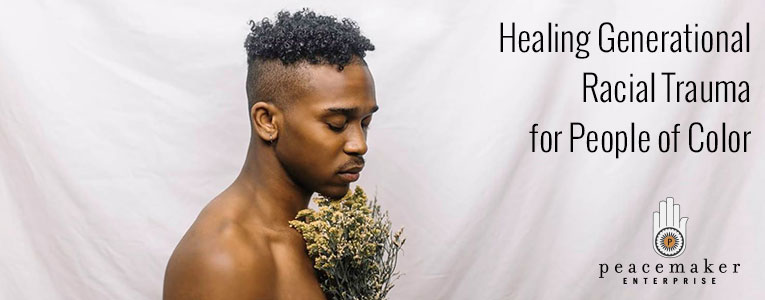
Being mindful helps us to self-regulate how we respond to our outer environments as well as our inner emotional environments. The practice of being mindful for a person leaving prison can help buffer the traumas of their prison re-entry journey and to help them to heal the traumas that they left behind. The practice of being mindful for a person standing in a long line at a food pantry can buffer the trauma of hunger.
Being mindful helps us to operate from a position of what we can do in the NOW instead of past distress or terrifying future fears. Cultivating mindfulness helps us to reduce negative reactions, and interactions with the ability to be emotionally, physically, and spiritually present with other people, places, situations, and ourselves under trying times.
As humans we are presently experiencing severe climate destruction, immigration abuse, mass incarceration, cultural conflicts, profound global transitions in the middle of an epic virus which has taken the lives of many. I believe that there is a great need for new systemic ways to live on our planet.
Mindfulness has no limits or set boundaries. It is a cultivated attitude and can be done at any time, any place or by anyone. Being mindful enables us to live life more holistically without the burden of exhausting distractions.
George Quant who was a former TM meditation teacher stated, “Meditation is a detoxication of the nervous system”. Dr. Joe Dispenza talks about sitting and training the body to obey when you request that your body stay still for a set amount of time no matter what your monkey mind (scattered distracting thoughts) dictate. Most of us come to the practice of meditation with a mind, body spirit disconnected and not grounded as I was and still face the challenge to stay grounded and sane.
The more consistently you can sit your body down to meditate the more you will be able to create new habits while your neurons fire and wire together to confirm the union of a new habit. Each time your neurons habitually fire and wire for your greater good it becomes better and your emotional, spiritual muscles become stronger.
Meditation affects our brain waves which activates different centers in the brain. Meditation is a precise technique for resting the mind and attaining a state of consciousness that is totally different from the normal waking state.
I would describe mindfulness as my house and meditation would be the furniture that helps me to sit and create enough stillness to rest deeply without sleeping giving my mind, body, and spirit time to reboot and reduce stress. Meditation is an action or what I call an activity of stillness.
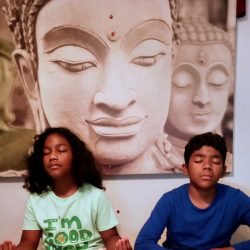
Meditation is an energetic experience. When people talk about diving deep, they are experiencing the quantum field or a unified field of energy. Dr Joe Dispenza describes it as our ability to tap into information or “direct knowledge which is essentially a download of information from the unified field into our brain. It occurs when we stop thinking and analyzing and we go into trance. It’s almost as if our brain pauses, and that pause in the chatter allows other types of information to enter our nervous system”.
There are different ways to meditate and enter that field. There are many creative ways to meditate as you process your day such as taking five minutes in your car before a meeting or sitting on the toilet an extra minute, mindful walking, waiting in line at the grocery store, before you go to a organizing meeting or showing up for a social justice march or one minute while waiting at the airport. Just imagine if the majority of those who went to a march or to work or school started their day with a meditation first.
Meditation enables me to rejuvenate my nervous system and all the daily generational micro aggressions that night be attached to it. Meditation helps me to release deep hidden hard wired internalized oppressions, colonial mindsets, hurts and traumas that are often carried from one generation to the next.
Where mindfulness is an attitude that can be applied to any situation throughout the day. Meditation is when we discipline the body, mind, and spirit to surrender to a special stillness. Meditation goes beyond personalities or cultural difference.
It is the awareness based in the concept of nothingness, no body, no politics, no class, race, or gender is needed for a good meditational experience. A good meditation experience is an energetic event experienced in a unified field of consciousness helping you to dive deeply while cultivating personal peace, less stress and unexpected states bliss.
The less attached you are to your outer personality the better your inner experience will be. When you learn how to dive deeply into that unified field of consciousness being Black, female, tall or short will never be more important than what you experience in that unified field of consciousness. With practice your inner self can be as fascinating as your outer self or even more. This has been my personal experience. I have been to many places just by sitting in a chair.
Mindfulness and meditation are reflections of each other. A mindful attitude supports and enhances the meditation process, and your meditation expands mindfulness. The more you consistently invest the stronger your meditation practice will be. Like any kind of healing or recovery process, it works if you work it.
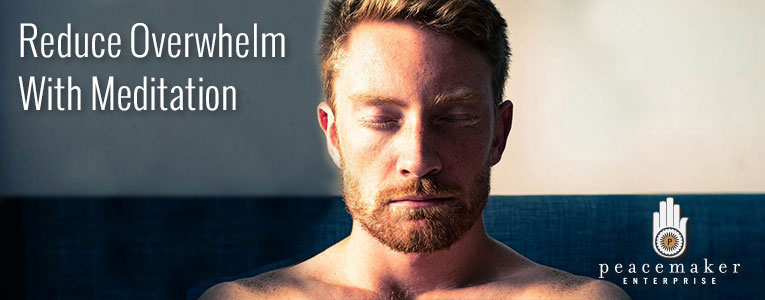
Meditation changes us, as it returns us to our right mind.
~Marianne Williamson
- General health and wellness
- Build your immune system
- Detoxification of the nervous system
- Reduction of stress and depression
- Healing trauma and addictions
- lowers blood pressure
- Releases ‘happy’ chemicals in the brain
- Spiritual awareness
- Relaxes tension around pain
- Ability to self-regulate your emotional reactions
- Improves digestion
- Reduces impact of cultural bias and daily micro-aggressions
- Sitting silent meditation
- Standing meditation
- Walking meditation
- Running with intention
- Labyrinth work
- Guided meditation
- Group meditation
- Laying down in certain situations or yoga poses
Neuropsychologist Donald Hebb first used this phrase in 1949 to describe how pathways in the brain are formed and reinforced through repetition. The more the brain does a certain task, the stronger that neural network becomes, making the process more efficient each successive time. Hebb’s research was a precursor to recent breakthroughs around neuroplasticity — the concept that our brain’s ability is not fixed but can continue to grow and learn well into old age.
~ Hitaji
Positive Radical Self Care coupled with a strong meditation practice can be powerful habitual tools for re-constructing a new life. Good habits create and strengthen pathways in the brain and at the same time destructive habits strengthen repetitive negative results. The more we do it, the more ingrained the practice becomes and the easier it is for our brain to process motivating a positive cycle of personal care as well as care for our community. We can re-wire our brains for positive wellness.
~ Hitaji
Scientific research teaches us that meditation directly affects the brain and its relationship to repetition. “Neurons that fire together, wire together.” – Neuropsychologist Donald Hebb first used this phrase in 1949 to describe how pathways in the brain are formed and reinforced through repetition. The more the brain does a certain task, the stronger that neural network becomes, making the process more efficient each successive time. Hebb’s research was a precursor to recent breakthroughs around neuroplasticity which is the concept that our brain’s ability is not fixed but can continue to grow and learn well into old age. The more you meditate the better it gets.
Meditation enables us to move from higher frequency brain waves to lower frequency, which activates different centers in the brain. Meditation can be the perfect support system for high stress populations such as first responders, poor people, sick people, social justice activists, teachers, addicts in recovery , parents, incarcerated populations, police persons , nonprofits including individuals who experience the daily micro aggressions pertaining to the coronavirus , systemic racism , cultural differences, poverty and the everyday stress of living in this fast-paced uncertain world as we experience what I see as a Planetary Renaissance. Just imagine how it would be if all people cultivated a strong meditation practice. Just think if all our children meditated in the school systems with their teachers.
Remember that good habitual actions create and strengthen positive pathways in the brain and at the same time destructive habitual actions create and strengthen negative results. The more we do the positive the more ingrained the practice becomes and the easier it is for our brain to process motivating a healthier cycle of personal care as well as care for our community. We can always re-wire our brains for positive wellness.
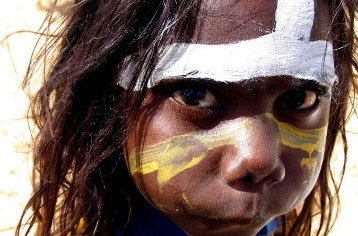 The elements of a mindful meditation process might look different because of its relationship to the dominant cultural environment and its customs. Tribal wars, colonial oppression, neo-colonialist wound-ology which equal generations of severe complex trauma, PTSD and however else it can be described as, and they all have their role.
The elements of a mindful meditation process might look different because of its relationship to the dominant cultural environment and its customs. Tribal wars, colonial oppression, neo-colonialist wound-ology which equal generations of severe complex trauma, PTSD and however else it can be described as, and they all have their role.
We have ignored the wisdom of those among us for generations who still have direct connection to ancestral ways of knowledge that point to the fact that our Earth is not capable of supporting our current environmental mistreatment. We are finally starting to look to those who once lived in a state of sustainability and abundance for a way forward if we do not destroy them first such as what we are seeing in the precious rain forests of this world.
The spirit of meditation and stillness can be found within diverse indigenous cultures throughout this planet and their power of listening with silence. It is not a Euro-centric invention. Before the colonial expansion and domination of western culture indigenous cultures had their own methods when faced with trauma and painful experiences before they were invaded and enslaved. In Australia, the Aboriginal people had and still have what they call Dadirri which is a form of deep contemplative listening and spiritual practice.
Dadirri can be found throughout the country in many languages. Elder and healer Miriam-Rose Engender-Baumann, Ngangiwumirr states, “Dadirri is inner, deep listening and quiet, still awareness. Dadirri recognizes the deep spring that is inside us. We call on it and it calls to us. This is the gift that Australia is thirsting for. When I experience Deidre, I am made whole again. It is something like what you call ‘contemplation. I can find my peace in this silent awareness. There is no need of words.
In order to have sustainable community you have to make sure the people are sustainable. This means healing trauma.
~ Jarmbi Githabul, Narakwal / Githabul Custodian
The Native American Vision Quest is another way to create a strong sacred space for meditation and stillness. The Vision Quest is traditionally experienced in a natural outdoor setting for a period of days spent in mindful observation of self and all life forms. The art of fasting, prayers and meditative solitude are central.
We are being called to merge the ancient with the modern.
Community meditation meet ups can serve to help heal the nervous system of neighborhoods and individuals damaged by stress, frozen needs and overwhelm. We understand based on scientific research that trauma in many ways can be passed to the next generation. We need meditative interventions; we need a meditation center in every community and especially in high stress marginalized populations.
Try box breathing with this short animation.
Try alternate nostril breathing with this short animation.
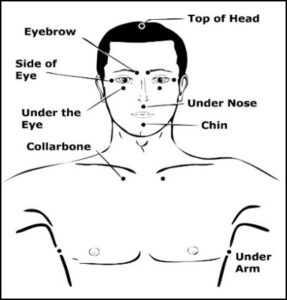
- Take time to learn the process of tapping on the body
- Use what is called the EFT script below that will fit your situation such as (depression or fear) There are many you can get online
- Can be used by itself or just before or after your formal meditation. Can be used when stuck in traffic
- Can be used just before you speak or having an anxiety or rage attack: Use as much as you can. Attach to your sitting meditation when possible
- You can always create a shorter version
Deep therapeutic breathing can enhance your meditation practice because it also helps to reduce stress and allow you to feel more grounded. Breathing deeply can happen anywhere without anyone noticing. Too many people take breathing for granted and will miss the benefits of this powerful gift of life on earth.
Box breathing which is also known as square breathing is one effortless way of breathing used to support better performance and to help people improve their concentration. It is a stress reduction breathing technique used by athletes, the U.S. Navy SEALs and people with lung disease.
Another example is Alternate nostril breathing. Alternate nostril breathing can calm and center your mind. It can bring your mind to the present moment and out of the past, releasing fears, regret, and worries. It is therapeutic for the circulatory and respiratory systems while relieving stress and relaxation for the mind and body. This kind of breathing will help harmonize the left and right hemispheres of your brain, which correlate to the logical and emotional sides of your personality. It also helps to purify and balance the nadis, which are subtle energy channels that will motivate a smooth flow of prana (life force) through the body. Alternate nostril breathing also helps to maintain a healthy body temperature.
Eight more breathing techniques
- Pursed lip breathing
- Belly breathing
- Breath focus
- Lion’s breath
- Alternate nostril breathing
- Equal breathing
- Resonant breathing
- Sitali breath
The Holy Observers of life
Being mindful helps us to become what I call “The Holy Observers of life’ without judgment or harm. Practicing mindfulness helps us to listen more deeply without competing to be heard. Mindfulness supports my awareness of a greater source or presence or what I sometimes describe as a Higher power or Spirit without religious attachments or dogma. It is how I express my spiritual experience. Being mindful can enhance any belief system that promotes compassion and kindness or no belief system at all.
Indigenous cultures: People of color
We’ve largely ignored the wisdom of those among us for generations who still have direct connection to ancestral ways of knowledge that point to the fact that our Earth is not capable of supporting our current environmental mistreatment and our relationship based in war and fear based belief systems . We are finally starting to look to those who once lived in a state of indefinite sustainability and abundance, for a way forward and if we do not destroy them first such as what we are seeing in our rain forests of this world.
The spirit of meditation and stillness can be found within diverse indigenous cultures throughout this planet and their power of listening with silence. It is not a Euro-centric invention. Before the colonial expansion and domination of western culture indigenous cultures had their own methods when faced with trauma and painful experiences before they were invaded and enslaved. In Australia, the Aboriginal people had and still have what they call Dadirri which is a form of deep contemplative listening and spiritual practice.
Dadirri can be found throughout the country in many languages. Elder and healer Miriam-Rose Engender-Baumann, Ngangiwumirr states, “Dadirri is inner, deep listening and quiet, still awareness. Dadirri recognizes the deep spring that is inside us. We call on it and it calls to us. This is the gift that Australia is thirsting for. When I experience Deidre, I am made whole again. It is something like what you call ‘contemplation. I can find my peace in this silent awareness. There is no need of words.”
The Native American Vision Quest is another way to create a strong sacred space for meditation and stillness. The Vision Quest is traditionally experienced in a natural outdoor setting for a period of days spent in mindful observation of self and all life forms. The art of fasting, prayers and meditative solitude are central.
The Vision Quest of / Dr. Michael Yellowbird. His story goes in the (blog) need to get this to you his vision quest
BELOW IS THE OLD PAGE LAYOUT
Meditation: Sitting your sacred ass down
Issues that drive people to build a meditation practice…
- Radical Self Care: improving your health, stress reduction, creativity, being grounded, performance, clear focus
- Growth: emotional healing, recovery and addictions, grief, knowledge of self, discipline, letting go
- Spirituality: building a relationship with a higher presence
- Society: micro-aggressions: working class stress, violence, racism, gender bias, poverty, incarceration, and other oppressions
What is meditation?
Meditation is a precise technique for resting the mind and attaining a state of consciousness that is totally different from the normal waking state. It is the means for fathoming all the levels of ourselves and finally experiencing the center of consciousness within…
The meditative process
- Sitting meditation
- Walking meditation and Labyrinth work
- Guided meditation
- Group meditation
- Mindful attention
- Therapeutic breathing
Feel the feeling but don’t become the emotion. Witness it. Allow it. Release it.
~ Crystal Andrus
Neurons that fire together, wire together
~ Donald Hebb
I grew up hearing my grandmother and others make three repeating statements. Get still! Be Still! Sit your ass down! This would be my first introduction to understanding stillness. I first heard and paid attention to the word meditation in 1981 at a 12-step meeting. I was a chronically depressed African American Muslim convert with two children. While fantasizing about suicide while watching a TV a commercial a woman came on talking about a OA recovery program and the woman said something like “there is another way”. I desperately ran to my first twelve step meeting (OA) with a crying infant, wearing a hijab, a veiled face, an eating disorder, and a depression I could no longer control. I sat with a circle of older White women who allowed me to talk and cry loudly for the most of that hour while one of them held my crying baby while walking her up and down the hallway. (READ MORE)
I was finally in a formal recovery program and life would never be the same. I thought that they looked strange sitting in that circle, and I imagine that they felt the same about me. Me there dressed in a hijab with face veiled That would be the first time I would feel heard and cared about without judgement. I would eventually realize that each woman gave up her time to talk as was the norm and silently agreeing to hold space for me and my child. They loved me so I could figure out how to start loving myself.
Years passed but the right people and right situations kept showing up. After meeting Ruth King at one of her workshops in 2010 my meditation practice became more consistent and more serious even though I had a long way to go. I was actively learning how to reduce stress by allowing meditation to style and mold my life. It was Ruth who talked about a woman dying from a stress related illness from lack of self-care. I was motivated by Ruth because she was a culturally sensitive and was informed about the burden of racial traumas, a worldwide African American Buddhist meditation teacher and a long-term student of Jack Kornfield.
My meditation practice grew stronger. I simply did not want to die like the women in my family system and the many other Black working class/poor women and social justice activists who were dying around me from stress. I read and studied as much as I could. I was an overweight, formally battered, stress out depressed African American single mother who was a social justice activist. Stress and rage were normal.
I spent years experiencing personal silent retreats at the Ruah Center located at the motherhouse of the Sisters of Charity. I am deeply influenced by (TM) Transcendental Meditation as an Influencer. I admire Dr Joe Despenza as a student of his teachings about quantum physics and the importance of a strong meditation practice. I have attended meditation classes and retreats at the Chung Tai Zen Center of Houston. New thought leader Rev. Michael Beckwith is a motivator, but my biggest motivators are my grandchildren as I teach them meditation and EFT.I want them well enough to take care of their minds, their bodies and their spirits starting on the inside first.
I am a self-aware grandmother with a strong imperfect meditation practice. The benefits of meditation come from repetition and a lifestyle commitment that I plan to keep. I am alive and growing more well each day.
The great mantra … Get still! Be still! Sit your ass down!
Meditation enables us to move from higher frequency brain waves to lower frequency, which activates different centers in the brain. Meditation can be the perfect support system for high stress populations such as first responders, teachers, police persons including individuals who experience the daily micro aggressions pertaining to cultural differences, poverty, illness and the everyday stress of living in this fast-paced world
Hitaji Aziz
Mindfulness is the awareness that arises when we non-judgmentally pay attention in the present moment. It cultivates access to core aspects of our own minds and bodies that our very sanity depends on. Mindfulness, which includes tenderness and kindness toward ourselves, restores dimensions of our being. These have never actually been missing, just that we have been missing them, we have been absorbed elsewhere.
~ John Kabat-Zinn, from Meditation
